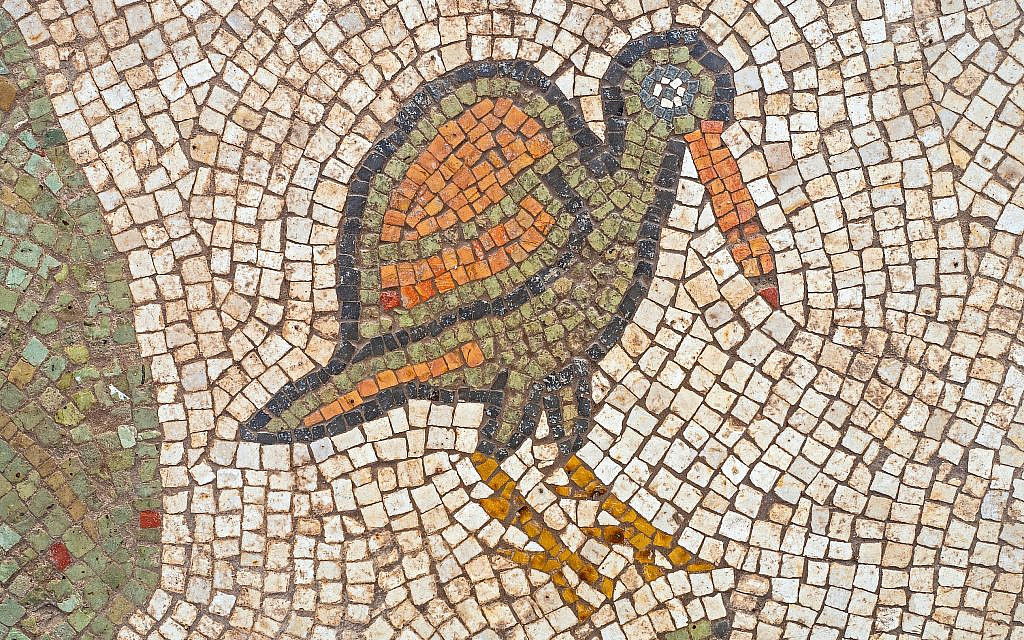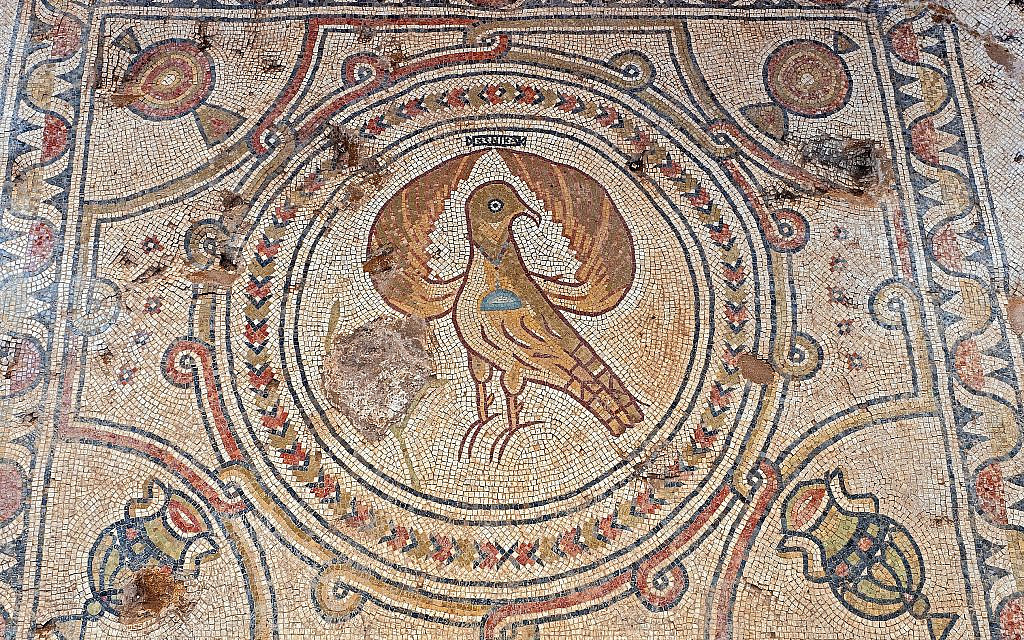Written
on the mosaic courtyard of a 1,500 year-old church, the Israel Antiquities
Authority (IAA) discovered

a Greek inscription commemorating the “Glorious Martyr.” Who this martyr was remains a mystery, but the magnificence of the church and a second inscription indicating that Emperor Tiberius II himself funded its construction, suggest the martyr was a figure of great importance.

a Greek inscription commemorating the “Glorious Martyr.” Who this martyr was remains a mystery, but the magnificence of the church and a second inscription indicating that Emperor Tiberius II himself funded its construction, suggest the martyr was a figure of great importance.
The
church is at the center of a larger architectural complex discovered in
excavations at Ramat Beit Shemesh. Structured like a basilica, the rectangular
church is divided by two parallel rows of pillars into three areas: a central
courtyard with halls on either side. In front of the church is a spacious
courtyard, or atrium, where the inscription was discovered. Next to the
basilica are a number of smaller chapels for prayer and worship.


The
church complex exposed at Ramat Beit Shemesh. Photo: Assaf Peretz, Courtesy of
the Israel Antiquities Authority.
Impressive
not only in size, the Basilica is decorated with spectacular mosaic floors depicting
birds, fruits, leaves and geometric designs. The walls are covered with
colorful frescoes. Several of the pillars’ capitals are engraved and made from
imported marble. A rare cross-shaped baptismal was also discovered, made from
calcite stone queried mainly from karstic caves.



Mosaics uncovered on the church floor. Photos: Assaf Peretz, Courtesy of the Israel Antiquities Authority.
Archaeologists
were excited to discover the church’s crypt was exceptionally well preserved.
According to Benjamin Storchan, director of the excavations on behalf of the
IAA, “We have uncovered few churches of this type in the country, especially
those with a crypt that survived in its entirety.” Storchan continues to
explain that the crypt was an “underground burial chamber where, presumably,
the relics of the saints were kept.” Two parallel staircases access the crypt,
one for entering the subterranean chamber and the other for exiting back into
the prayer hall. According to Storchan, this system was an architectural
adjustment made to accommodate large groups of Christian pilgrims visiting the
church and the relics within the crypt. The crypt’s interior was decorated with
marble slabs, creating an impressive appearance.


Staircases
leading pilgrims to and from the crypt. Photo: Assaf Peretz, Courtesy of the
Israel Antiquities Authority.
The
church was first founded in the 6th century CE., and expanded several years
later by the Byzantine Emperor Tiberius II Constantine. The financing and
expansion of the church was documented by a Greek inscription on site.
According to Storchan, “Many written sources testify to the imperial funding of
churches in Israel; however, little is known in archaeological study about
dedicated inscriptions such as the one found in Beit Shemesh.” Another mosaic
depicts a large eagle with spread wings, a symbol of the Byzantine Empire. This
also testifies to imperial involvement in the church’s expansion.


Eagle,
symbol of the Byzantine Empire. Photo: Assaf Peretz, Courtesy of the Israel
Antiquities Authority.
Excavations
at the “Glorious Martyr” church have been underway for three years. Thousands
of youth participated in the excavation, which was funded by the Ministry of
Construction and Housing, and executed by the CPM Corporation. Excavators
recovered thousands of artifacts from the site, including what appears to be
the most complete collection of Byzantine windows and lamps ever discovered on
a single site in Israel. Today, October 23, 2019, the finds are presented to
the public in a new exhibit at the Bible Lands Museum in Jerusalem.
No comments:
Post a Comment